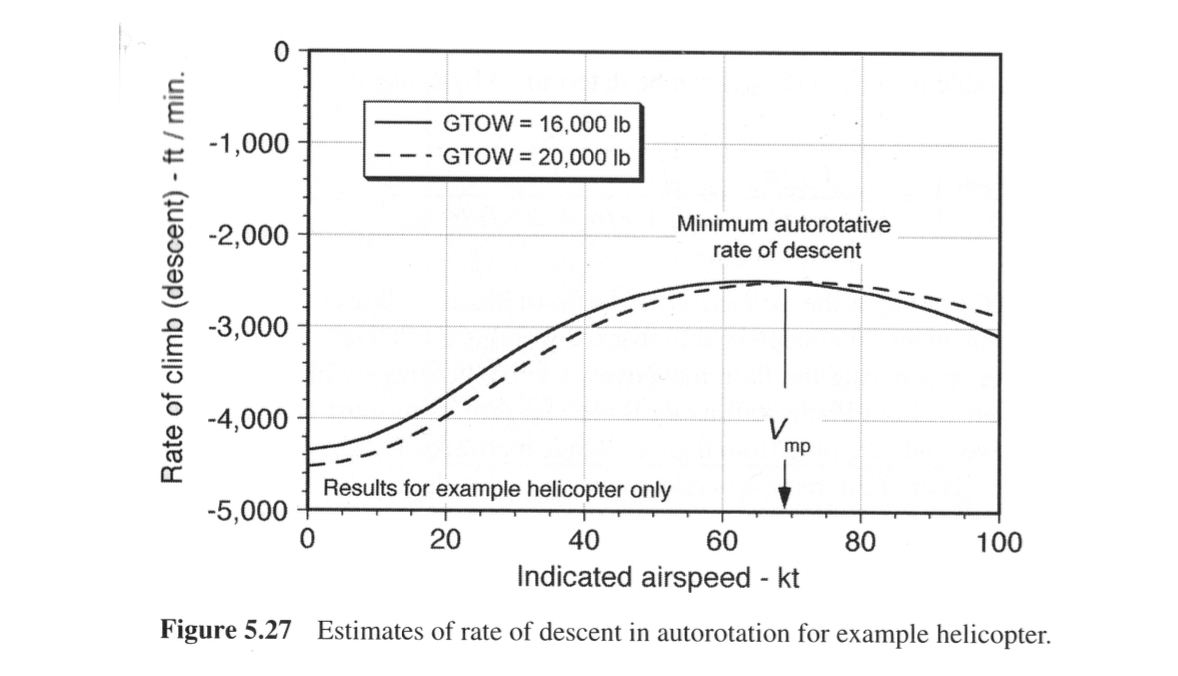When the engine fails in a single engine helicopter it can autorotate back to earth: it gives up potential energy from reducing height to keep the rotor turning, which then continues to provide lift. Autorotation can take place straight downwards in vertical flight, but the general recommendation is to maintain forward speed, like a fixed wing gliding: the rate of descent is much lower if there is forward speed.
We associate helicopters with hovering, but this is a strenuous effort. Even a bit of forward velocity generates translational lift, which makes it much easier for the rotor to generate lift:
- The forward inflow tilts the lift vector forward, decreasing induced drag and blade torque, and increasing lift. Or stated in a different way: the airstream is flowing in already, and does not need to be accelerated from zero. The rotor now starts to work more like a fixed wing does.
- The airstream through the rotor experiences less interference from the fuselage.
The effect of forward velocity on auto rotational rate of descent is depicted in a graph in this book:
Going back to vertical autorotation: the vertical upward airstream needs to go through the rotor fast enough to reach the windmilling state, so that lift is created by decelerating the air passing through it. If we compute the lift component per area of a vertically autorotating rotor, it is comparable to a $C_D$ value of 1.1 to 1.2 referenced to the rotor area. According to this source:
- a flat plate has a $C_D$ of 1.28
- a parachute has a $C_D$ of 1.4.
So in vertical descent, the auto-rotating rotor is almost as good as a parachute of the same area - it’s just that the parachute size is a bit small for the typical payload of a helicopter, resulting in vertical descent speeds of between 3,600 to 6,200 ft/min. By way of comparison:
- Air France 447 fell to the ground with a vertical descent rate of 10,000 ft/min.
- Captain Sullenberger's plane took four minutes to reach the Hudson in a proper glide, from 2,060 ft altitude = average of 500 ft/min.
Two factors make autorotation much more survivable though:
- The descent rate can be “flared” by pulling the cyclic back (exchanging forward velocity for more rotor kinetic energy) and then collective up just before ground contact, slowing down the rotor and increasing lift. The pilot only has one shot at this.
- The descent rate is a lot less if autorotation is done at a forward speed, the best one being the optimum climb speed.
Note that in a vertical descend there is no pullback of the cyclic, only increase of collective - plus the rate of descent is higher. A higher speed and fewer means to brake, that is not recommended!
A side note
The windmilling rotor does not turn the other way! The incoming air from underneath tilts the lift vector forward, like in a glider. Part of the rotor disk is driven by the aeroforces into the same direction as it was when still under power.



